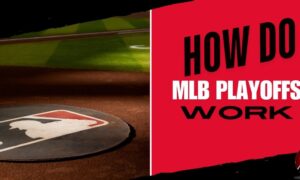Harry Frazee Early Life
Harry Herbert Frazee was born on June 29, 1880 in Peoria,Illinois to William and Margaret Frazee. He attended Peoria High School, now known as Peoria Central, and was a high school baseball teammate of Henry Bay, a major league player in Cleveland and Cincinnati.
Harry Frazee became the assistant manager of the Peoria Theater at the age of 16. He was a player-coach of the semipro baseball team known as the Peoria Distillers. Hi first love continued to be the theater. In 1907, he moved to Chicago and built the Cort Theater.
After garnering success in Chicago, Harry Frazee moved to New York City and in 1913 built a theater on West 48th Street known as the Longacre Theater. He staged some hits such as “Fine Feathers” by Eugene Wilder and the musical “Adele” in this location. His biggest boon financially was on April 5,1915 as he was a boxing promoter for a fight between Jess Willard and Jack Johnson in Havana, Cuba. He made millions from this fight.
Harry Frazee of New York Buys the Boston Red Sox
In 1916, the Red Sox won the World Series. Harry Frazee had some money so he bought the team from Joseph Lannin for $675,000. Boston won again in 1918. However, in 1919, they finished in sixth place and attendance was down. Frazee loved his theater as much and now needed to get some money to keep it afloat (with WWI raging) so he began selling off players. He had a standing offer to trade Babe Ruth to the White Sox for Shoeless Joe Jackson. Now that deal was no longer on the table due to the Black Sox Scandal that got Jackson banned from baseball.
Frazee was once quoted on if the Red Sox are for sale….
“Of course, they are for sale, so is my hat and coat…everything is for sale but at my price”
American League president Ban Johnson and Frazee didn’t like each other , reportedly because Frazee wasn’t approved ahead of the sale by the league to become an owner. Johnson was hard on the Red Sox for several years because of this. With America involved in World War,. the total gate decreased from 496,397 in 1916 to 387,856 in 1917 and then, in the war-shortened 1918 season, to 249,513. In 1919, Red Sox home attendance rebounded to 417,291, but the increase was smaller than what most other American League teams enjoyed. During these years the team’s revenue could not have been sufficient to service Frazee’s required interest payments. In 1920, for example, one of the most profitable years in baseball up to that time and the earliest one for which we could discover team financial statements, the Boston franchise turned a profit of only $5,970 after paying interest and the 6 percent dividend on the preferred stock.
Also in 1919, pitcher Carl Mays jumped the team. Johnson ordered him suspended, but Frazee instead sold him to the Yankees. American League President Ban Johnson had promised Yankee owners Jacob Ruppert and Cap Huston to get them better players, but never followed through. The Mays flap divided the American League into two factions—the Yankees, Red Sox and Chicago White Sox on one side and the other five clubs, known as the “Loyal Five”, on the other.
The “Loyal Five” wouldn’t deal with the Red Sox and their owner so with the Shoeless Joe Jackson deal off the table and Harry Frazee needing money to keep his theater in New York going, he needed cash and the Yankees offered an all-cash deal: $25,000 up front and three promissory notes of $25,000 each, plus a $300,000 loan to be secured by a mortgage on Fenway Park.
With the note from Lannin, the former Red Sox owner, that he had used in part to finance his purchase of the Red Sox having come due in November 1919, There was little that could be done but accept the deal and keep things afloat.
Babe Ruth was Sold!
Harry Frazee Changes Red Sox Future
A bond was created between the Yankees and the Red Sox and now they came together because of Fenway Park. Frazee didn’t own it. He rented it for $30,000 per month from the Taylor family of the Boston Globe that had it built when they owned the tame from 1904-1911.
Things were messy. In the spring of 1920, Lannin finally made good on a threat to slap a lien on the Red Sox. Since the lien barred Frazee from trading players or buying Fenway without Lannin’s permission, Lannin effectively controlled the team. Lannin also threatened to sell his interest in the Fenway Realty Trust, which would have opened the door for a new owner to buy into the park if Frazee lost the franchise. Eventually, Lannin and Frazee reached a settlement. Lannin agreed to pay the Federal League bill and would not oppose Frazee’s purchase of Fenway. In return, Frazee resumed payments. On May 3, Frazee and Taylor signed a deal to pay off the existing mortgage and make Frazee sole owner of Fenway Park.
As an additional security measure, Frazee secured a $300,000 loan from the Yankees and used a second mortgage on Fenway as collateral. Now in essence the Yankees owned Fenway Park.
It has been said that Frazee intended to use the money to buy better players but now he has a struggling theater business that need an influx of cash and that was his primary love. To keep the Rd Sox franchise alive, he began selling off his player. No one would respond to him except the Yankees and he need to keep them happy.
Here is a list of players he got rid of to the Yankees in this time period;
- 1921 Bullet Joe Bush- pitched in two pennants for Yankees
- 1922-Joe Dugan- Played on five Yankee pennant teams
- 1923- Harvey Hendricks- Pitched in 1923 World Series for Yankees
- 1920- Waite Hoyt- was in seven World Series for New York
- 1921- Sad Same Jones- pitched five season for Yankees
- 1919- Carl Mays -traded to Yankees. This one started it all.
- 1923- Herb Pennock-played in five World Series for Yankees
- 1923- George Pipgras- played in five pennant inning seasons for Yankees
- 1920- Wally Schang – caught in three pennant winning seasons in New York
- 1922- Elmer Smith- was traded from Yankees to Cleveland where he hit first ever World Series grand slam
more articles like this and others at Baseball Spotlight
Harry Frazee Sells Red Sox
In 1921, newspapers began circulating a story that Harry Frazee was the Jew that ruined the Red Sox but he was a Presbyterian. In July 1923, Frazee sold the team for $1,150,000. The result of Harry Frazee selling the Red Sox in 1921 was that he left them bankrupt and bereft of talent. The Red Sox went on to finish in last place (or close to it) and under . 500 in every season until 1934.
Harry Frazee Post Red Sox
Back to the theater, Harry Frazee had one Broadway success while financing the show,”No,No.Nanette” which made him multi-millions of dollars.
Harry Frazee died in 1929 of kidney failure and is buried at the Kensico Cemetery. Also. Lou Gehrig is buried there along with Ed Barrow, former front office executive of the Red Sox.
About the author– Tom Knuppel has been writing about baseball and sports for a few decades. As an avid St. Louis Cardinals fan he began with the blog CardinalsGM. Tom is a member of the United Cardinals Bloggers and the Baseball Bloggers Alliance. He also maintains the History of Cardinals website. More recently he has been busy at KnupSolutions and the primary writer of many sports at KnupSports and adds content at Sports 2.0. Tom is a retired High School English and Speech teacher and has completed over one hundred sportsbook reviews. He also can be followed on Twitter at tknup. Feel free to contact Tom at tknuppel@gmail.com









